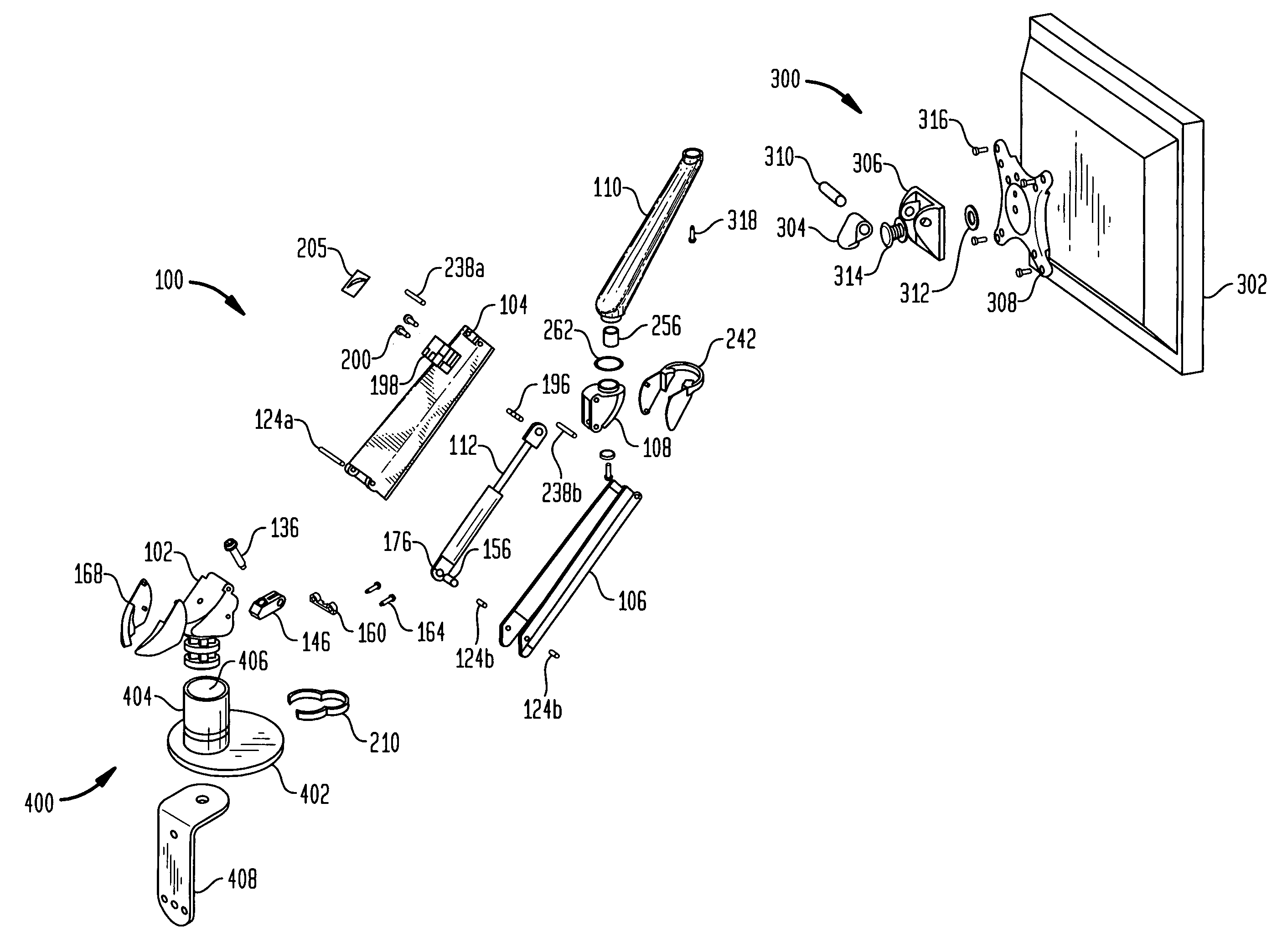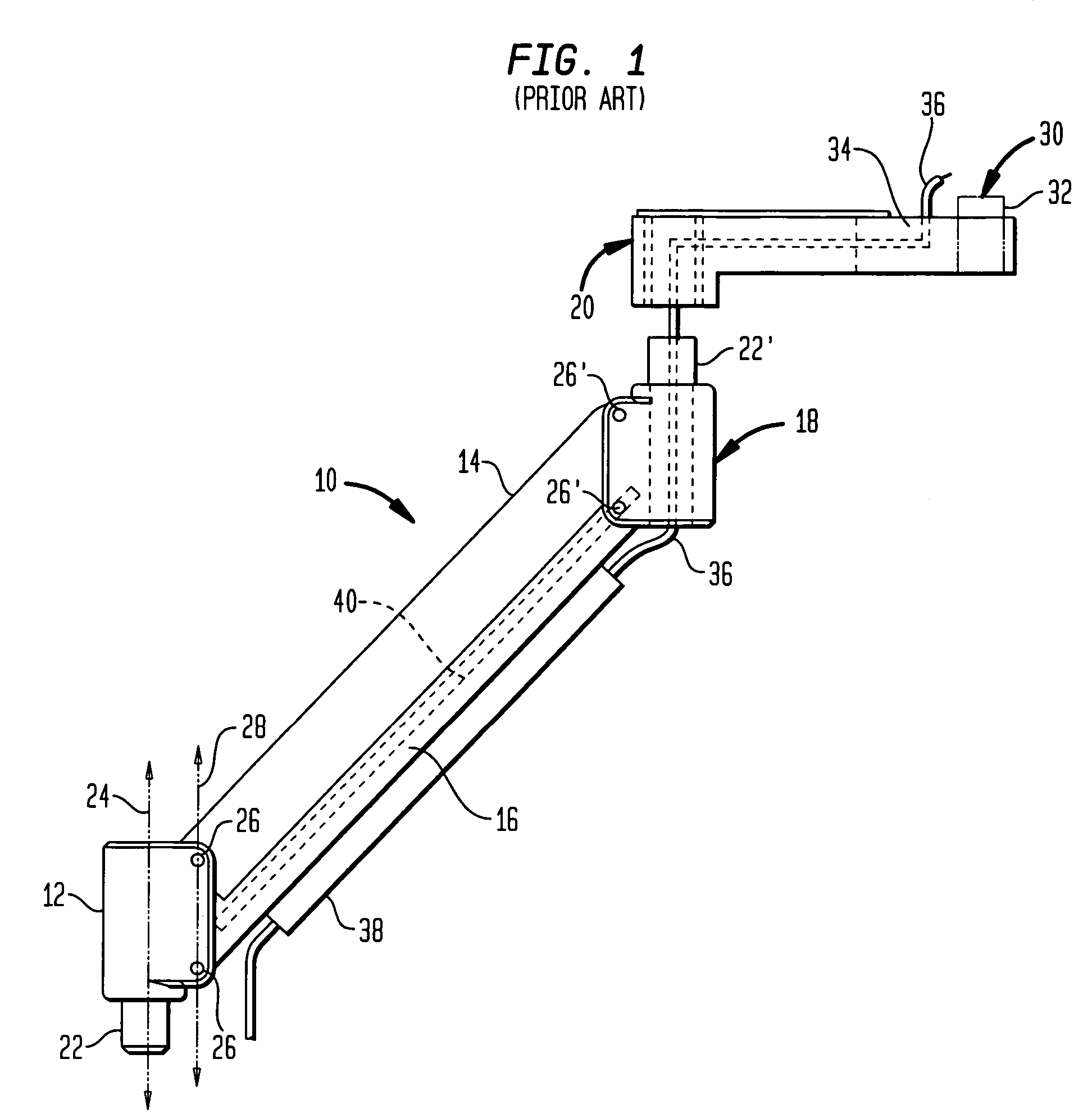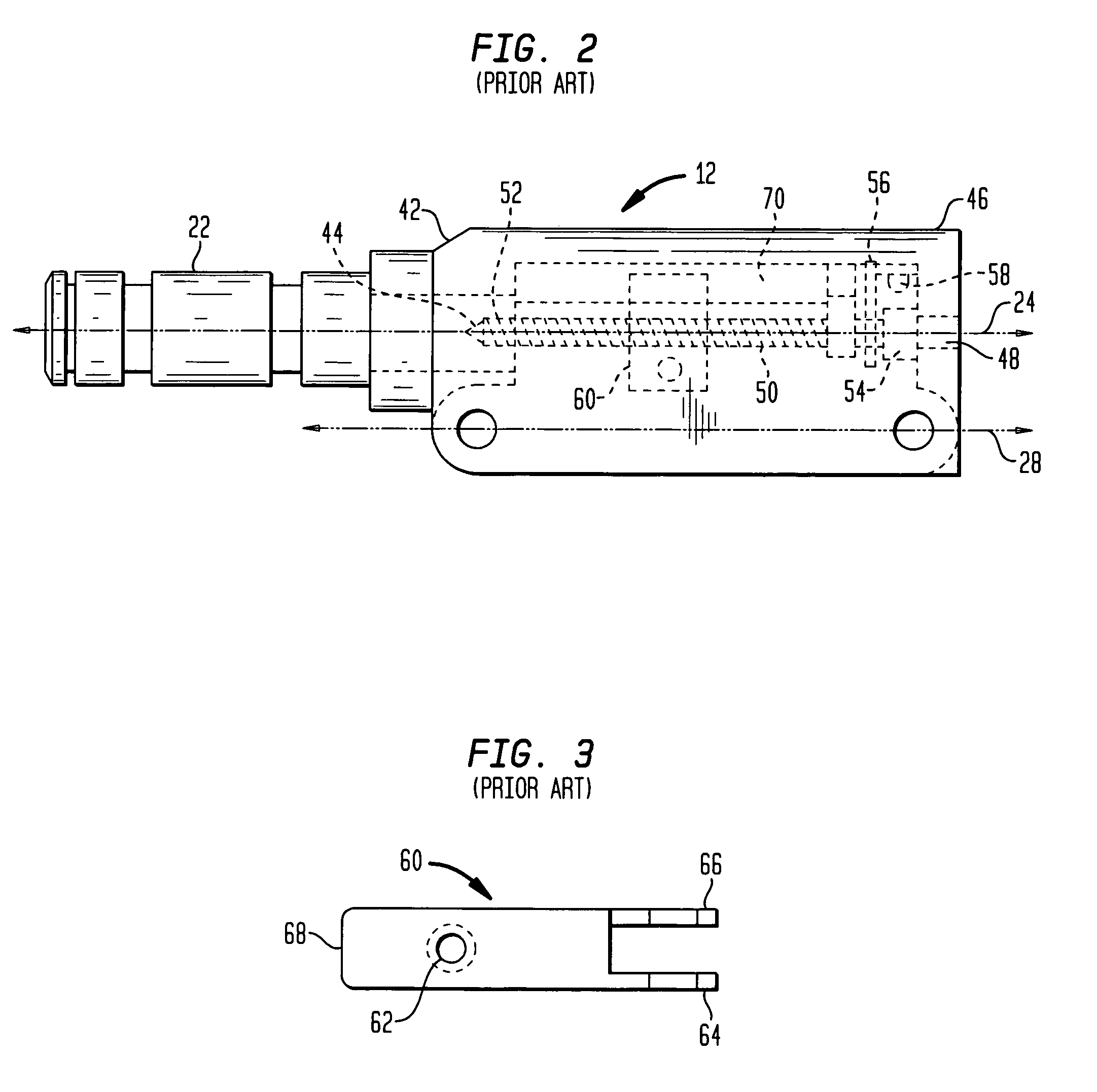Angled mini arm having a clevis assembly
a mini arm and assembly technology, applied in the field of compact and versatile extension arms, can solve the problems of reducing the available workspace occupied by equipment, inability to place equipment in a desired location, eye strain, neck strain, etc., and achieve the effect of preventing loosening
- Summary
- Abstract
- Description
- Claims
- Application Information
AI Technical Summary
Benefits of technology
Problems solved by technology
Method used
Image
Examples
Embodiment Construction
[0065]In describing the preferred embodiments of the invention illustrated in the appended drawings, specific terminology will be used for the sake of clarity. However, the invention is not intended to be limited to the specific terms used, and it is to be understood that each specific term includes all technical equivalents that operate in a similar manner to accomplish a similar purpose.
[0066]FIG. 8 illustrates an extension arm 100 in accordance with a preferred embodiment of the present invention. The extension arm 100 is connectable at one end to a mounting assembly 400 and attachable to a tilting device 300 at the other end. The mounting assembly 400 may be of any desired configuration, and may be affixed to a piece of furniture such as a desk, a wall such as a slat wall, a section of an office cubicle, etc. The tilting apparatus 300 is connectable to a user device 302 such as a flat panel monitor, although other electronic or non-electronic devices may connect to the tilting a...
PUM
 Login to View More
Login to View More Abstract
Description
Claims
Application Information
 Login to View More
Login to View More - R&D
- Intellectual Property
- Life Sciences
- Materials
- Tech Scout
- Unparalleled Data Quality
- Higher Quality Content
- 60% Fewer Hallucinations
Browse by: Latest US Patents, China's latest patents, Technical Efficacy Thesaurus, Application Domain, Technology Topic, Popular Technical Reports.
© 2025 PatSnap. All rights reserved.Legal|Privacy policy|Modern Slavery Act Transparency Statement|Sitemap|About US| Contact US: help@patsnap.com



